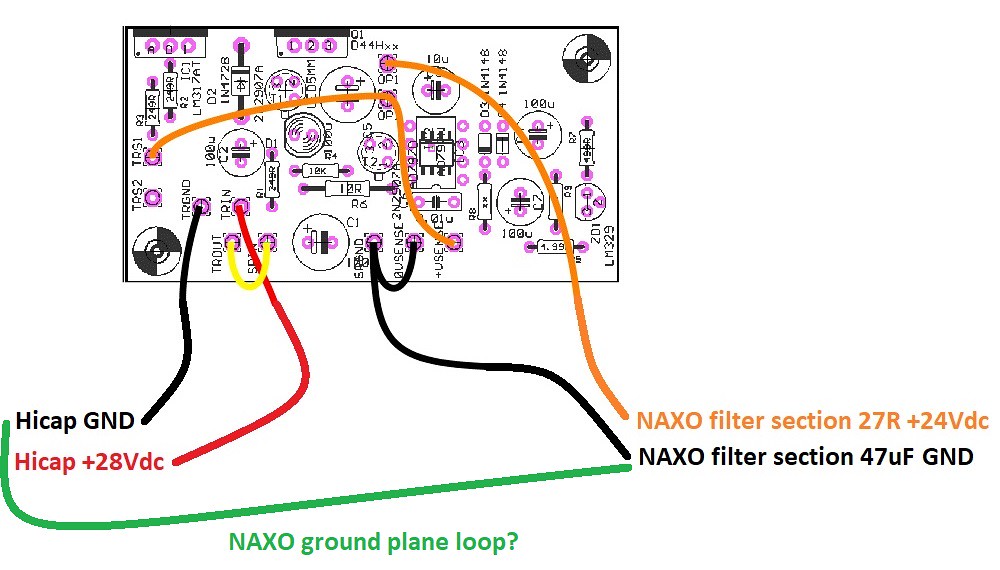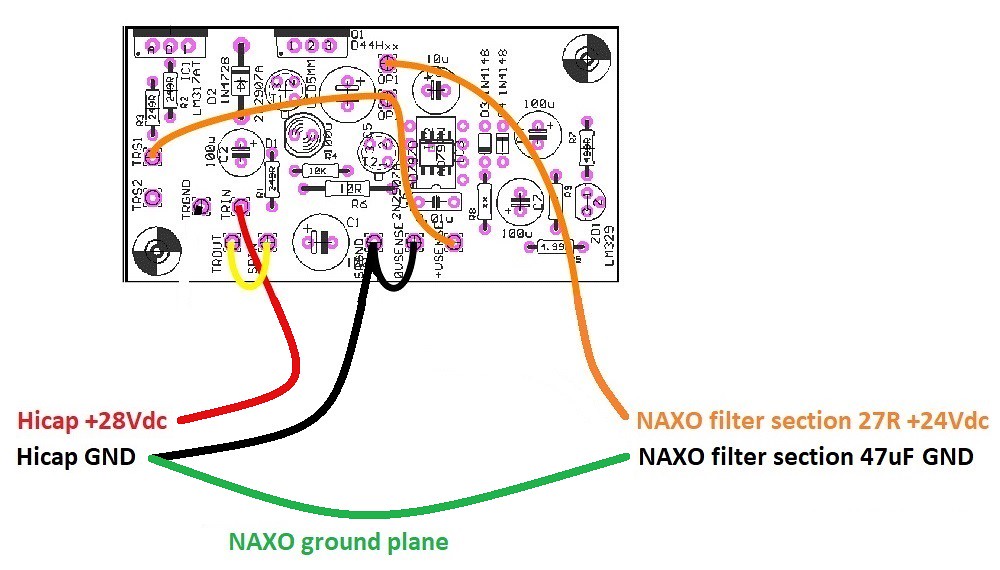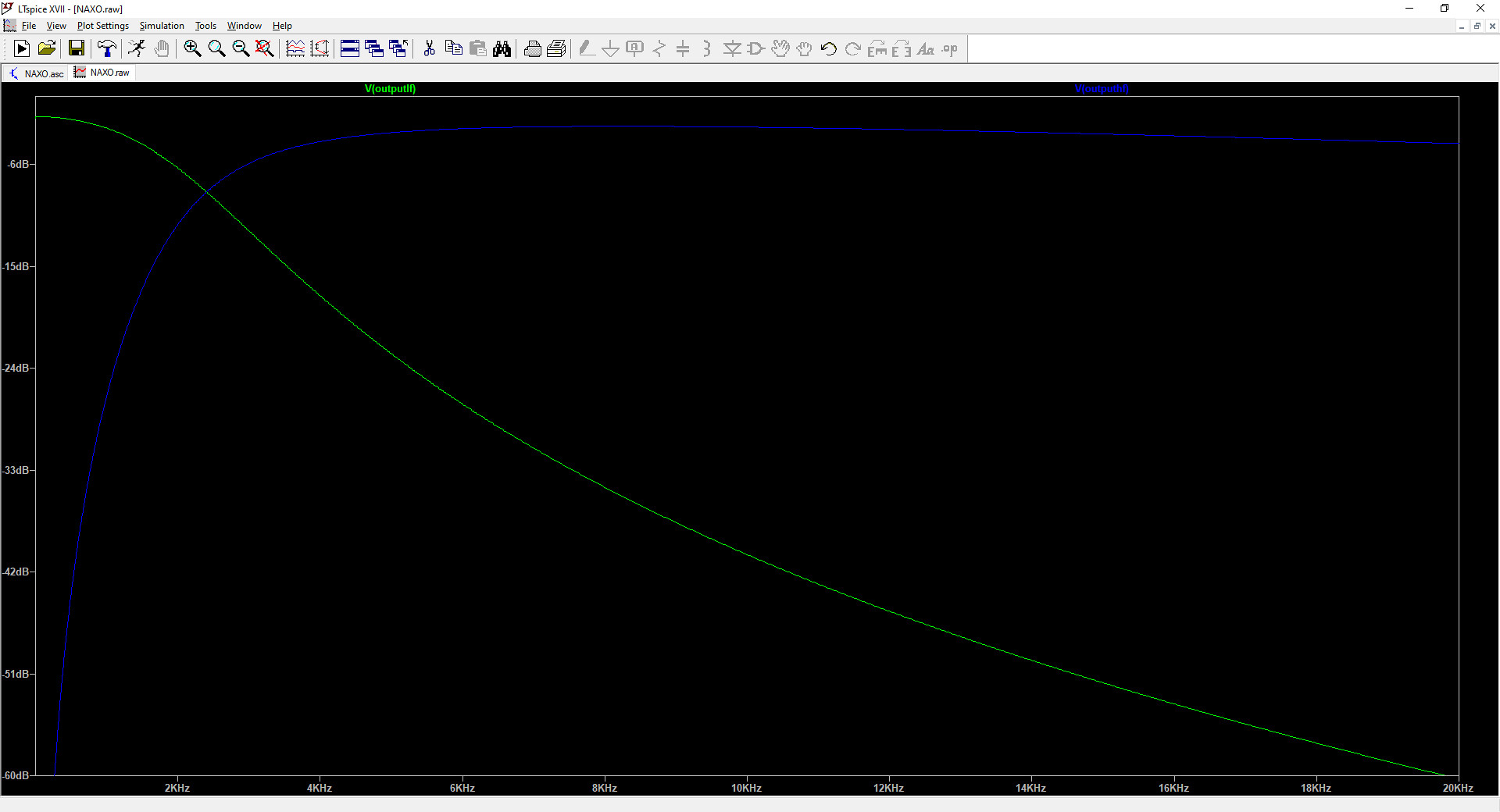Project stalled for a while, as I was concerned about how to wire in the ALWSR. Seems simple enough, two options in the ALWSR user manual, Super Regulator + Tracking pre-regulator, local sense and Super Regulator + Tracking pre-regulator, remote sense. In general, as I understand it, using local sense avoids some potential instability issues associated with remote sense and is the default option. Well even I could see that using the local sense wiring with multiple ALWSR in the NAXO combined with the NAXO ground plane might lead to troubles:
 ALWSR local sense NAXO ground loop wiring
ALWSR local sense NAXO ground loop wiring
So I thought I would go for the remote sense, but somewhat wary of this decision I contacted @Andrew L Weekes. Thanks for your time and patience
Andrew pointed out two things: I should stick with local sense, but allow the NAXO ground plane to form the sole return path from the load; that the SRGND is the star point ground on the ALWSR PCB so wire in the power to the ALWSR there. So the new wiring scheme is as follows:
 Improved ALWSR local sense NAXO wiring
Improved ALWSR local sense NAXO wiring
So next daft question, what size hook up wire?
 ALWSR local sense NAXO ground loop wiring
ALWSR local sense NAXO ground loop wiringSo I thought I would go for the remote sense, but somewhat wary of this decision I contacted @Andrew L Weekes. Thanks for your time and patience
Andrew pointed out two things: I should stick with local sense, but allow the NAXO ground plane to form the sole return path from the load; that the SRGND is the star point ground on the ALWSR PCB so wire in the power to the ALWSR there. So the new wiring scheme is as follows:
 Improved ALWSR local sense NAXO wiring
Improved ALWSR local sense NAXO wiringSo next daft question, what size hook up wire?
Last edited:


 IMG_20200329_181439458_HDR
IMG_20200329_181439458_HDR NAXO sweep ch1
NAXO sweep ch1 NAXO sweep ch2
NAXO sweep ch2 NAXO SBL schematic
NAXO SBL schematic NAXO simulation
NAXO simulation